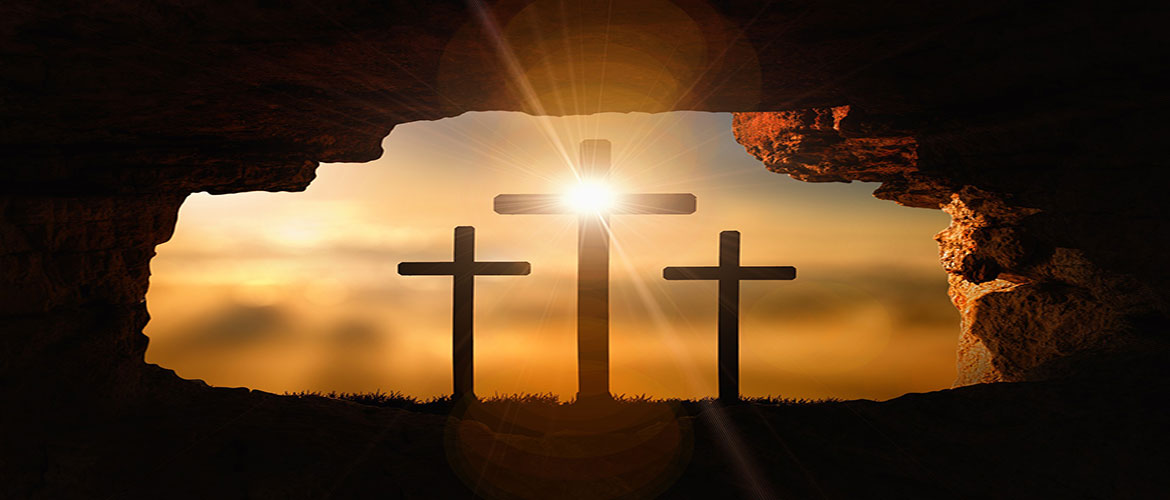
Jerusalem may be the most famous city in the world, revered by three great religions as a ‘holy city’ because of its historical significance for Jews, Christians and Muslims. It is miraculous that anything of historical value remains in this city of Jerusalem since it has been destroyed by so many different invading armies over the centuries.
For Muslims, this city, Jerusalem, is ‘holy’ because of their belief that the Prophet Muhammad was transported, in about 630ad, by the angel Gabriel from Mecca to Jerusalem, specifically to what is often referred to as the “temple mount”. There Muhammad visited the place of prayer furthest distance from Mecca. The Al Aqsa Mosque was built on that site to memorialize this event. A short walk away, still on the ‘temple mount’, is the Golden Dome, constructed between 685-691ad. This magnificent structure is built over a large rock which Islam says was the place Abraham brought his son Ishmael to sacrifice him. From that rock, Islamic tradition says, the angel Gabriel escorted Muhammad to heaven. There, Muhammad reported, that he met with other prophets, such as Moses and Jesus Christ. He witnessed paradise and finally saw God and the angels. Muhammad then returned from heaven to continue his life and teachings. Muhammad died in 632ad. The Jerusalem ‘Temple Mount’, with these two historic structures, is the third holiest site in the world for Muslims, behind Mecca and Medina, and it remains under the control of Muslim security forces and clerics in Jerusalem. Christians and Jews are permitted on the Temple Mount only with Muslim approval.
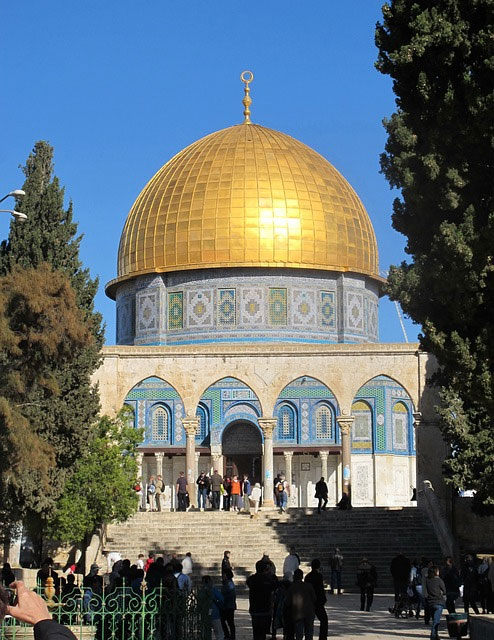
For Jews, Jerusalem has a much older and richer history. Genesis 22 gives us the story of Abraham, instructed by God to bring Isaac, his miracle son, to sacrifice him to God on Mount Moriah, about 2000bc. That may sound barbaric, but it was a fairly common practice in ancient times as the ultimate sacrifice a person could make in worship of their god. Jehovah God, of course, always prohibited this vile practice. Abraham was well over 100 years old by this time, and he knew Isaac had been a miracle son born to him and Sarah in their very old age. Paul gives us this insight into how Abraham courageously obeyed God’s instructions: “Abraham did not waver through unbelief regarding the promises of God but was strengthened in his faith and gave glory to God, being fully persuaded that God had the power to do what He had promised. That is why it was ‘credited to him as righteousness’.” (Rom. 4:20-22) You may recall that at the last moment God provided a ram caught in a thicket. Abraham named that place “Jehovah Jireh”, the LORD will provide, and God reaffirmed His covenant there with Abraham for both the land and a ‘chosen people’, his descendants through Isaac.
A generation later that Abrahamic covenant was reaffirmed by God with Isaac, (Genesis 26:2-5) and then again in the next generation by God with Jacob, the father of the 12 tribes of Israel. (Gen. 28:13,14) You’ll recall Jacob and his descendants ended up in Egypt, escaping a famine in the land of Israel, and did not return from Egypt after the famine was over, but settled there making Egypt their home. Their numbers grew very rapidly and soon a Pharaoh was head of state in Egypt who knew nothing about Joseph or the famine. This Pharaoh was frightened by all the Hebrews living in his land, so he enslaved them and even passed laws to contain their population growth. (Exodus 1) Almighty God came to their rescue with the great Exodus and Moses led out through the Red Sea to Mount Sinai where they spent several months hearing from God about being His people. A generation later, under the leadership of Joshua, the Hebrews re-entered the land God had promised to Abraham.
Several centuries later King David conquered the city of Jerusalem (2 Samuel 5) and declared it “the City of David”, the capital of the United Kingdom Israel, around 1010bc. Jerusalem became the global center of Jewish focus, including Jews making pilgrimages there from all over Israel, for their 3 great annual festivals. David is buried there in Jerusalem as are many others of the Hebrew kings and prophets.
About 970bc King Solomon, David’s son, succeeded his father to the throne and constructed the great Temple of Jehovah God on Mount Morah, with the tip of that mountain, where Abraham had come to sacrifice Isaac, as close to immediately under the “Holy of Holies” of the Temple as possible. (2 Chron. 5-7) At its completion, this temple was one of the great wonders of the world at that time and at the highest point in Jerusalem, almost exactly where the Muslim Golden Dome is today, the Temple was visible from any place in Jerusalem, and a source of great encouragement to God’s people, the Jews.
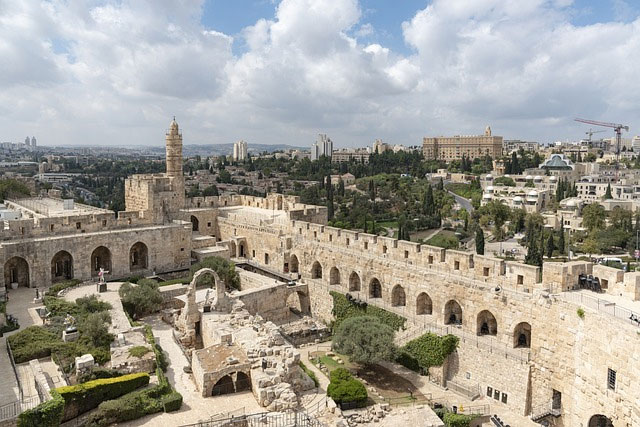
After Solomon’s death in 930bc the nation of Israel divided into a “southern kingdom Judah” with its capital city Jerusalem; and a “northern kingdom Israel” with Samaria as its capital. The northern kingdom turned away from God. (1 Kings 12) In 722bc King Shalmaneser of Assyria conquered the ‘northern kingdom Israel’, deporting thousands of Jews as slaves, and importing thousands of slaves conquered from other nations. The intermarriages of Jews and these foreign peoples produced the much maligned “Samaritans”. (1 Kings 17; John 4)
Despite the warning and appeals of several great prophets from God, in 586bc King Nebuchadnezzar and the Babylonian army destroyed Jerusalem and demolished the Temple of God, taking to Babylon thousands of Jewish captives and all the precious artifacts from the Temple. (2 Chron. 36) But God had not abandoned His people and in 538bc King Cyrus, the Persian Emperor, having conquered the Babylonians, issued a decree (Ezra 1) permitting all Jews to return to the ruins of Jerusalem for the purpose of rebuilding their city and their Temple. Construction on this ‘second Temple’, built on the same location as the first, was finally completed in 515bc. (Ezekial 6) But it was yet another 60 years before God stirred in the heart of Nehemiah, cupbearer to the Persian Emperor, to ask for a leave of absence, return to Jerusalem and embark on one of the most amazing reconstruction projects of all time. In 445bc Nehemiah led a remarkable 52 day rebuild of the demolished Jerusalem city wall and then served as Governor! (Nehemiah)
In about 430bc Malachi was giving the Jews of Jerusalem God’s final prophetic messages of the Old Testament era. 400 years of God’s silence followed, broken by Gabriel’s visit to Zechariah in the Jerusalem Temple, announcing the birth of John the Baptist as the forerunner of Jesus, the Jewish Messiah. (Luke 1) Six months later the angel Gabriel appeared to Mary in Nazareth announcing her miraculous conception. (Luke 1) And of course the story of the life and ministry of Jesus follows as recorded in the Gospels. But most Jews in Jerusalem did not recognize Jesus as Messiah and the tensions resulted in Roman soldiers tightening their control over this great city Jerusalem. Finally, in 70ad Roman armies destroyed Jerusalem and demolished the great Temple of God. Jews scattered all over the world, with only a small percentage remaining in the region around Jerusalem. What is known as the “western or wailing wall” is all that remains of that temple mount and Jews gather there to pray for God’s restoration of historical Israel.
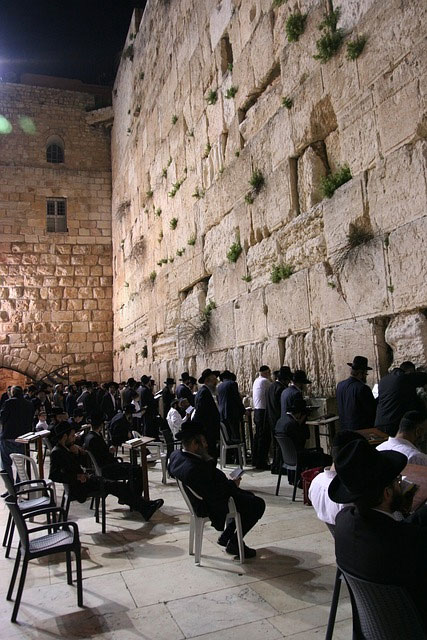
And then, miraculously, in 1948ad the United Nations declared a ‘homeland’ for Jewish people, naming it “Israel” and welcoming Jews from all over the world to return to their homeland. Of course, as we know, that has been met with great opposition for Israel today is surrounded by several nations seeking its demise. In 1967 what is known as the ‘six-day war’ expanded Israel’s territory including reclaiming much of the city of Jerusalem. Today Jerusalem is divided into ‘four quarters’. I found a fascinating web link for a tour of Jerusalem today, probably written by a non-Christian tourist: https://www.tourradar.com/
For Christians while Jerusalem is the birthplace of our “religion”, God has intended Christianity to be a global experience with no sacred earthly locations, because our relationship with God, through Jesus Christ, is unrestricted by geography or politics or time. Thus, while there are many Biblical sites to visit in and around Jerusalem, Christians do not revere them as Muslims revere the Al Aqsa Mosque & Golden Dome or Jews revere the “Wailing wall”.
About 5bc the story of Jesus in Jerusalem begins with Herod the Great, Roman appointed “king” of Judea, (37-4ad) sending soldiers from Jerusalem to Bethlehem to kill all baby boys under age 2. Magi from the East had told Herod of a newborn “King of the Jews”! (Matthew 2) (dates related to Jesus are approximate) Luke 2 gives us the account of both the first visit of baby Jesus to Jerusalem for His dedication, (Luke 2:22-40) and the last record of anything in Jesus’ youthful years, when He came with His family to Jerusalem for the great Passover festival. (Luke 2:41-52)
In the years 22-25ad, or so, Jesus Christ, God incarnate, spent several years frequenting Jerusalem, teaching in the Temple courts and elsewhere, and doing miracles in many different places in Jerusalem, as recorded in the four Gospels.
During the Passover weekend, Jesus was crucified, then raised from the dead in Jerusalem. (John 13-19; Matt. 26-28; Luke 22-24) While some Christians treasure a visit to the Church of the Holy Sepulchre, built in the 4th century to commemorate these events, other Christians visit the area known as Gordon’s garden and tomb, and the nearby hillside which looks amazingly like a skull.
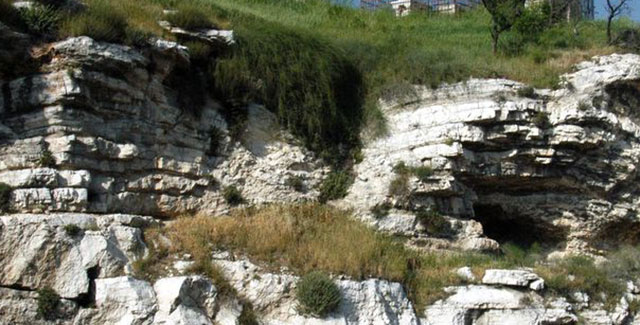
40 days after His resurrection Jesus ascended back to heaven, from the Mount of Olives, just outside Jerusalem. (Acts 1)10 days after that, the Holy Spirit descended upon 120 people gathered in Jerusalem and the “Ekklesia”, the Church Jesus promised, was born! (Acts 2) From the years 25ad to about 40ad Jerusalem was the center of the Christian movement with focus almost exclusively on Jews. Then in obedience to Matt. 28:18-20 and Acts 1:8 the apostles began taking the Gospel of Jesus out to Samaritans and Gentiles in the region. (Acts 3-10) The first martyrs were Stephen the deacon (Acts 7) and James the apostle (Acts10), both killed in Jerusalem.
Saul the Pharisee, persecuting the church in Jerusalem, encountered the resurrected Jesus on the road to Damascus. Saul’s life was transformed, and taught by the Holy Spirit, Saul became the premier evangelist for the Gospel of Jesus. (Acts 9) Saul changed his name to Paul and the Jerusalem council affirmed that the Jesus “ekklesia” is open to all, Jew and Gentile, because salvation is God’s accomplishment in each person,‘by God’s grace, through sin repentant faith in Jesus Christ.’ (Acts 15)
46ad From the Syrian Antioch church Paul and Barnabas headed west on their first missionary journey, taking the Gospel to Turkey and beyond. (Acts 11-14) While Peter and the other apostles continue to base in Jerusalem, venturing out primarily to Judea. In the centuries since, of course, the Gospel has now spread to the farthest places on earth and back in Jerusalem there is a great movement of “Messianic Jewish Christians”, Jews who like those in first century Jerusalem, declare Jesus Christ to be their Messiah and Savior!
Have a comment or question about today’s chapter? I’m ready to hear from you, contact me here.

Pastor Doug Anderson
“Let us run with perseverance the race marked out for us, with our eyes fixed on Jesus…” (Heb. 12:1,2)
Archived back issues of “Walking with Jesus” and other resources are available by clicking here to open our ‘home page’ (or go to HOME at upper right of this page).
Share with friends. Subscribe below for daily “Walking with Jesus”.


